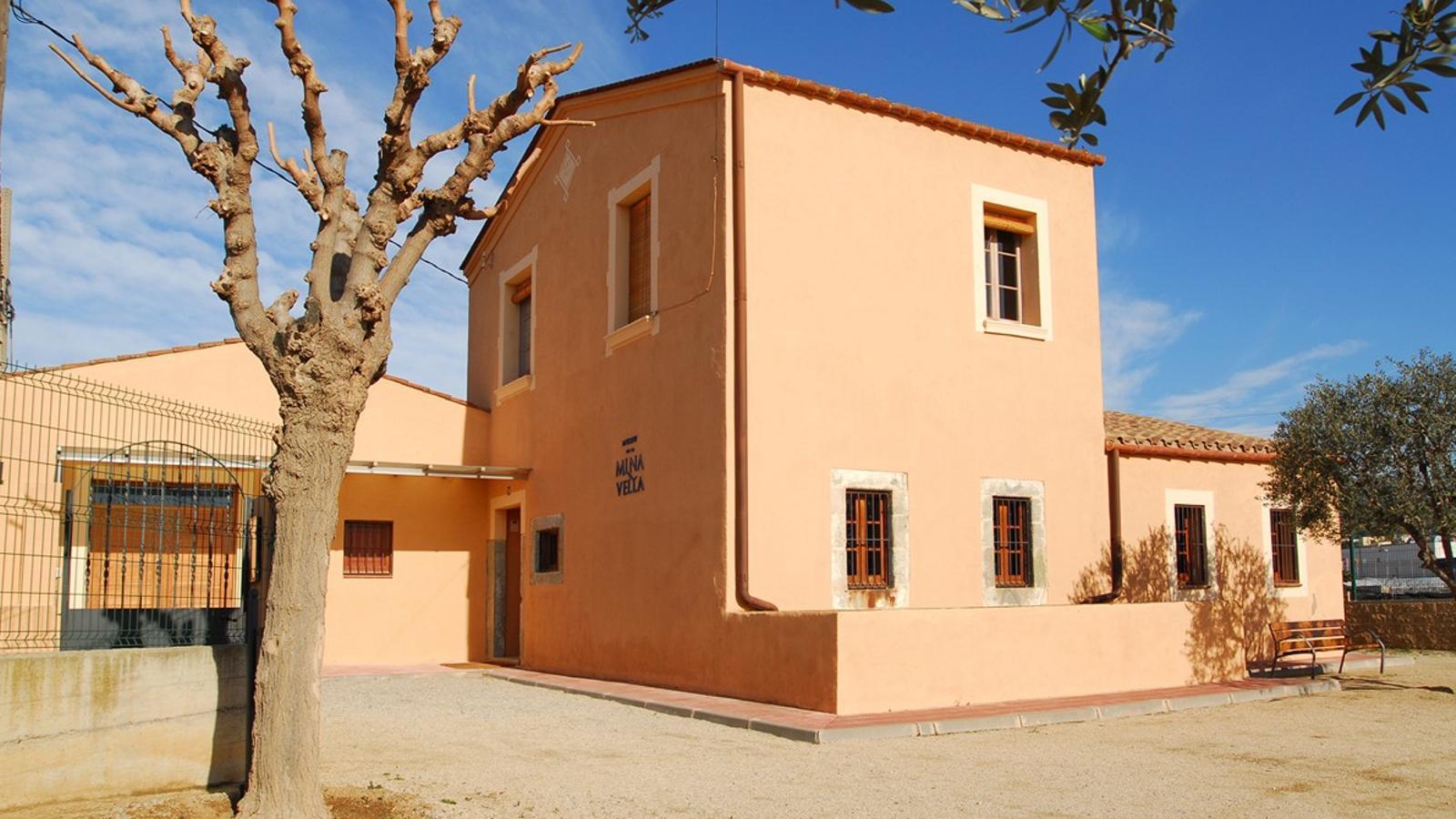It's a shame that many residents, vacationers, and visitors to Vilassar de Mar have never set foot in the Mina Vella Museum and are unaware of the municipality's rich cultural heritage. There are many attractions worth visiting. For example, the Monje Museum, the Carme Rovira House Museum—a weaver who turned to painting (in the naive style)—the Can Nadal watchtower, the parish church—with works by post-war Catalan painters—and numerous Modernista and Noucentista houses. Of the latter two styles, those designed by Eduard Ferrés i Puig, designer of the Ritz Hotel in Barcelona, stand out.
There are still carcabanes in Catalonia: do you know what they are?
The Museum of the Old Mine of Vilassar de Mar


I have always said irrigation ditch, with an open e. But it is writtenirrigation ditch, because the vast majority of the linguistic domain, and especially where there are irrigation ditches, pronounce it with a closed e. I thought that irrigation came fromwaterAnd that's why it surprised me that it was written irrigation and not irrigation. But it turns out that the word irrigation (of pre-Roman origin, with the same meaning as today, canal or ditch) is written like this, with c (the wordirrigation refers to irrigation or the irrigation system).
I'm also learning a bit of language by doing this series about the country's freshwater heritage. And words I didn't know, like carcabá (space located under the mill workshop that contains the roller or horizontal wheel, which is moved by the falling water and moves the millstone).
It's really cool in the hut of the old Vilassar de Mar flour mill, Ca l'Eudald, where I am now. Built in 1806, it was later also a farmhouse. Many residents of Vilassar used its name to refer to the cemetery, as it's located very close by. Even now, some say that someone "has been taken to Ca l'Eudald," meaning they've been buried. Currently, Ca l'Eudald houses the Mina Vella Museum. It was inaugurated in 2000 by Artur Mas, according to a plaque at the entrance, when he was Minister of Economy, Finance, and Planning (that planning thing... shouldn't it be in every regional ministry?). The former president has family ties to the Vilassar de Mar water company. His father and grandfather were its presidents.
In the mill's carriage, there were two wooden reels. When the mill was in operation, this entire room was flooded. And, of course, the reels were damaged. None remain. "The miller only came down here to perform maintenance work," explains Feliu Novell, historian and head of the Vilassar de Mar Old Mine Museum. "The mill operated until 1915. The pond that held water for the mill is now a water tank, coming from the Mina Vella, which supplies the old town of Vilassar. It is said that no one has ever seen it empty. It was the first water tank in Vilassar, and it allowed for improved distribution and quality." Novell– They say that chlorine has saved more lives than all the vaccines combined. It's cheap, easy to apply, and completely disinfects drinking water, thus preventing the transmission of diseases," he adds.
A few Vilassar residents took the initiative in 1846 to build the Mina Vella (Old Mine) to bring water to the population. "They weren't looking to make a profit," explains Feliu Novell. "And if there were profits?" I ask. "Well, they adjusted the prices," he replies, scanning an interesting collection of objects that tell the story of the Vilassar de Mar water company—one of the oldest in Spain—and how water is distributed in this municipality.
Currently, the average daily water consumption in this village is about three million liters. If no water arrived for four days, they would start to get thirsty.
The museum tells us, through text and images, about the construction of wells and mines. To mine, they worked by oil lamps (candles were too expensive), sitting on a very low stool. "In the municipality, we have about five kilometers of galleries excavated with pick and shovel. Some sections are lined with pickaxes and ceramics to prevent landslides," explains Feliu. At the mine heads, where the water sources are located, bricks were placed—to prevent sand from falling—between which the walls weep with water.
My attention is drawn to a pipe with a tree root growing inside it. Also noteworthy are old plumbing tools, water distributors (lead boxes with holes that allowed more or less water to flow through), water gauges (stopcocks that operate thanks to a piece of glass, allowing the contracted water flow to pass through), water pumps—with the arrival of electricity in this municipality, centrifugal and piston pumps—and meters.
Outside the museum is a waterfall made of blue ceramics. There is also a small pond with water lilies where the water flows into the house. When water flowed continuously to homes, the excess water was used for the waterfall, the laundry room, and the vegetable garden. There are still a few waterfalls in the town of Vilassar de Mar with closed circuits that pump the water.
"Did you know that the water in the Maresme River has a reputation for being very hard?" Novell tells me when we say goodbye. "It's especially noticeable when doing laundry. You have to use more soap, and once it's dry, the clothes end up stiff due to the limescale. Fortunately, the water from the wells and mines is supplied mixed with that of the Ter; lime. If water from the mines were supplied directly, household appliances and hot water systems would constantly clog," he continued.
In Vilassar de Mar, there are no longer any fishermen or boat captains. Nor are there many flower plantations. Those who used to work with flowers have had to reinvent themselves—or plant flowers that were not common in this area, such as small sunflowers, for bouquets—because most of the flowers are imported. But the Mina Vella continues, as always, bringing water to the people of Vilassar.
